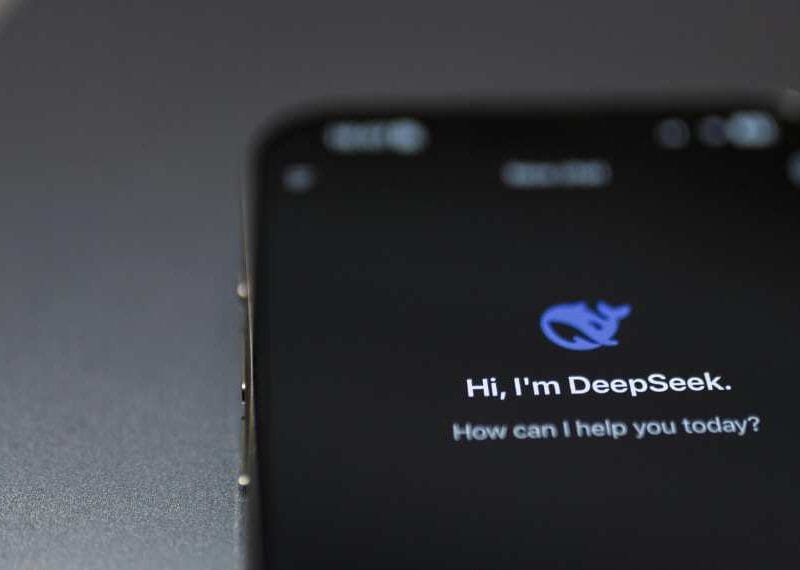Leading Through AI Disruption: The Secrets to Impactful Thought Leadership
The AI revolution is not just a technological shift; it’s a fundamental reshaping of industries, careers, and the very fabric of work.
In this era of unprecedented change, authentic and actionable thought leadership has become more crucial than ever.
As AI permeates every sector, the challenge for leaders isn’t merely to understand its capabilities, but to articulate its implications, guide its responsible integration, and help stakeholders navigate its complexities.
How can thought leaders genuinely thrive in this AI-driven landscape, cutting through the noise and offering insights that truly matter?
This Techronicler article compiles powerful insights from leading business executives, strategic visionaries, and seasoned tech professionals.
They reveal the core principles and practical strategies for effective thought leadership in the age of AI, offering a blueprint for those seeking to build influence, foster responsible innovation, and empower their communities through genuine wisdom.
Read on!
Sara Levy-Lambert
AI is on the verge of derailing careers and entire industries, and active and actionable thought leadership is now more crucial than ever. What is your recommendation to strengthen these voices?
One of the most powerful ways to fortify leadership in an AI-driven landscape is to cultivate hybrid forums—spaces where seasoned practitioners and rising technologists co-create narratives rather than one side lecturing the other. For example, instead of a traditional white paper, host a live virtual “reverse AMA” where your AI team poses questions to your frontline managers about market shifts they’re observing. This non-standard approach preserves institutional knowledge while spotlighting the real-world context that AI models often miss.
Equally important is the practice of story mining—systematically gathering micro-case studies from your network rather than relying on glossy success stories. I once launched a biweekly “Behind the Door” newsletter at Awning that featured two-paragraph snapshots from property managers who’d used our predictive-pricing tool in unexpected markets. The result wasn’t just better click rates; we uncovered nuanced use cases that informed our roadmap and gave those managers a platform to amplify their own expertise.
Finally, lean into AI-augmented peer councils: small, cross-industry cohorts that use lightweight AI tools to surface patterns in each other’s challenges, then convene to trade strategies. This builds trust, democratizes insight, and ensures your thought leadership isn’t siloed in executive briefs but woven into the fabric of every team.
By embracing these non-traditional methods—hybrid forums, story mining, and AI-augmented councils—you transform thought leadership from a broadcast into a living ecosystem, one that evolves as quickly as the technology itself.

Sara Levy-Lambert
Vice President of Growth, Awning
Brandy Morton
AI is reshaping marketing at warp speed—rewiring how we reach customers, elevating creative expectations, and flooding feeds with automated content. To stay ahead, marketers need more than adaptation; they need authentic, actionable thought leadership that raises the bar for the profession.
Algorithms can compile facts, but they can’t replicate the seasoned judgment behind a mid-campaign pivot or the human insight that turns shifting buyer signals into resonant stories. Real leaders share more than theories: they offer narrative-driven lessons, transparent results, and candid reflections that cut through digital noise.
Authenticity is now a competitive currency. Audiences crave real-world case studies—wins, failures, and the instinctive decisions in between. Trust grows when marketers expose both the missteps and the logic behind every successful move.
AI still matters. Savvy teams deploy automation for data crunching, targeting, and speed, then layer on the marketer’s unique perspective and voice. The goal isn’t to outrun the machine but to fuse its power with human creativity.
Effective thought leadership also means choosing the right arenas—industry webinars, niche communities, executive roundtables—where depth beats volume and conversations move markets. Marketers who keep learning and openly share discoveries stay at the forefront, leading with expertise and humility.
In an AI-driven age, thought leadership isn’t optional; it’s table stakes. Bring your experience forward, leverage AI where it multiplies impact, and ground every message in real results for real people. That’s how we safeguard our relevance—and set a higher standard for everyone.

Brandy Morton
Founder & CEO, Brandy Morton Marketing Ltd. Co.
Matt Mayo
To strengthen thought leadership in the AI era, you must tie insights to real impact. That means moving past predictions and into practical guidance for industries that feel left behind.
When we started educating our SMB clients about AI, we didn’t lead with models or tech jargon. We led with: “Here’s how AI could help you reduce ticket response times, streamline compliance, or protect your data.” That clarity built trust and positioned us as a voice worth following, not just another opinion in the noise.
If you want your voice to matter, start by solving problems people are actually facing. Get specific, stay grounded in your domain, and show what responsible, useful AI adoption really looks like.
The most powerful thought leaders right now aren’t shouting about disruption—they’re calmly guiding people through it.
Matt Mayo
Owner, Diamond IT
David Rodewald
The starting point of a thought leadership campaign is identifying and establishing the campaign’s core message. No AI magic can help in this early phase because most thought leaders already have an idea of their core message. And in many cases they are experts in that topic.
What the thought leader will need help with is developing that core message into a campaign.
First off, the thought leadership message must be noncommercial but relevant to key stakeholders. Also, it needs to be broad enough to sustain a campaign. A messaging house – where the roof is the core message that is held up by a pillar for each supporting message– is a good visual tool to share the messaging campaign with others.
With the core message in hand, it’s time to start generating a body of expert commentary to establish expertise – through blog posts, press releases, interviews, or other opportunities.

David Rodewald
Managing Director, The David James Agency
Schuyler Dragoo
In the AI age, thought leadership must move beyond trend-chasing into systems fluency and human resonance.
Audiences don’t just want hot takes that chase the latest media cycle—they crave trust, transparency, and nuance. The best leaders today aren’t just loud; they’re translators. They help people understand the why behind the AI, the risks behind the rewards, and the cultural logic behind the code.
As someone who collaborates with AI in both creative and strategic contexts, I’ve learned that insight doesn’t come from dominance or plug-and-play solutions, but from dialogue—with the tech, the data, and the human experience.
We can’t treat AI as a final stop or fix-all. It’s a tool, not a destination—and one that must be examined critically. Strong thought leaders embrace curiosity, question the systems themselves, acknowledge ambiguity, and challenge algorithmic norms. They aren’t leaders because they’re infallible, but because they’re willing to witness, adapt, stay curious in a changing landscape.

Schuyler Dragoo
Creative Strategist, Schuyler Dragoo
Riyya Hari Iyer
A good AI leader, in my view, is no different from a good tech leader: They are someone who isn’t afraid of technology, AI, in this case. Instead, they find a way to utilize it for creating a better world while also empowering people.
It is true that AI has been dangerous, in the form of Deepfake, or the layoffs that have happened recently. However, one must understand that it is not AI, but the people who are using AI, who are responsible for this, for they lack ethics. Companies that are incentivized to cut costs and thereby use AI unethically are also responsible.
An ethical AI leader would empower their team to get skilled in using AI, because AI absolutely needs human intervention, thereby preventing employee replacement. They should enforce a set of policies governing the use of AI, and also manage the storage of customer data ethically, ensuring privacy.
Furthermore, they should prioritize diversity in the data used to train AI to prevent inherent biases.
Finally, decentralization and segregation of power and responsibilities in the organization would also prevent misuse.

Riyya Hari Iyer
Software Engineer
Dr. Cornelia Shipley Bearyman
“If history is a predictor of the future, here is what we know… technology revolutions have created more value than they destroyed when approached through the lens of conscious leadership.”
There are three things Business Leaders can do to position themselves for success in the age of AI:
Elevate your mindset. Move from scarcity to abundance thinking. Instead of asking “How do we protect jobs?” ask ‘How do we elevate human capability and capacity to accelerate our competitive advantage?”
Create space for the voice of all your stakeholders. Engage with your employees, customers and communities to craft an integrated AI strategy.
Model the principles of conscious leadership by demonstrating that AI can serve all stakeholders simultaneously.
In the age of AI, thriving companies will use AI to enhance human creativity, deepen customer relationships and solve society’s core problems. Don’t simply adapt to the future, create it.
Shanel Evans
I love AI as a tool for brainstorming and getting ideas flowing, but let’s be real: if we lean on it too hard, we risk losing the curiosity and creativity that make our brands stand out.
Thought leadership isn’t about regurgitating what a bot spits out, it’s about thinking outside the box, speaking from the heart, and showing up with the kind of energy that draws people in.
Use AI to support your ideas, not replace them. Your unique voice, lived experience, and vibe are what turn words into impact and AI can never replicate that.
At the end of the day, it’s our stories, our passion, humor and our perspectives that set us apart…and no algorithm can ever compete with the power of a human who boldly stands in their authority.

Shanel Evans
Social Media Strategist, Socially Savvy Co
Adam Hertzman
Thought leadership in the AI space today focuses too much on tactics and hype and not enough on strategy.
Strengthening thought leadership on AI will require a renewed focus on strategic innovation: solving difficult problems that would not have been possible to solve before AI.
Roy Amara (Institute for the Future), said, “We tend to overestimate the effect of a technology in the short run and underestimate the effect in the long run,” and this sentiment applies here in particular. We need more heuristics for jump-starting innovation with AI.
Leaders in the nonprofit world such as Everytown for Gun Safety are starting with the core problem—in their case, the lack of up-to-date data on gun violence incidents in the U.S.—and solving them with AI, such as their new AI-driven database of gun violence reports from all current news stories.

Adam Hertzman
Principal, Adartova Consulting LLC
On behalf of the Techronicler community of readers, we thank these leaders and experts for taking the time to share valuable insights that stem from years of experience and in-depth expertise in their respective niches.
If you wish to showcase your experience and expertise, participate in industry-leading discussions, and add visibility and impact to your personal brand and business, get in touch with the Techronicler team to feature in our fast-growing publication.












